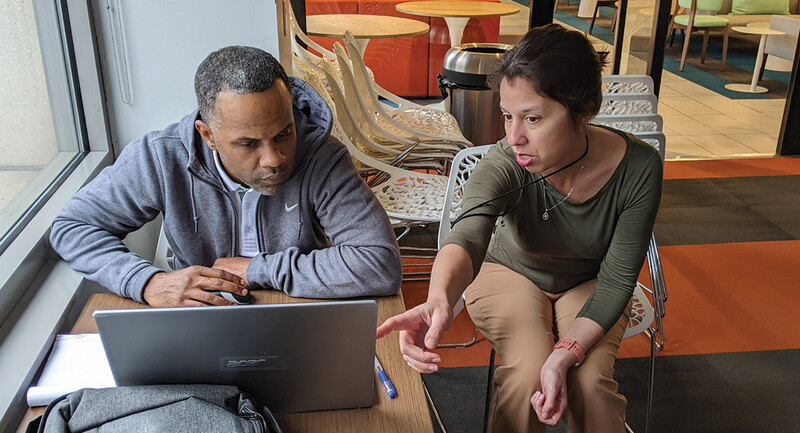Photo: Tara Linney works with a client in the BreakFree Education Fellowship.
Young people in the criminal justice system are often overlooked when it comes to schooling and career opportunities. The nonprofit BreakFree Education is working to change that by providing incarcerated youth access to high-quality education and helping them develop their strengths and potential.
Since 2016, BreakFree has operated the Travis Hill School in New Orleans's juvenile detention center and adult jail, helping young people work toward their high school diploma. BreakFree also develops educational materials (like mini-units and book club resources) for students in confinement, that are available free to teachers working in a juvenile justice facility. The nonprofit helps other schools and education programs in juvenile justice facilities through management and technical support.
In addition, BreakFree operates a program in Washington, D.C., the BreakFree Education Fellowship, to support recently released individuals who were charged for crimes committed in their teens or early twenties. ASCD Emerging Leader Tara Linney is a project lead and technology coordinator of this program. The fellowship matches people released under D.C.'s Incarceration Reduction Amendment Act with nonprofit organizations, through which they participate in 18 months of paid, on-the-job training.
Fellows first get a month of technical and professional skills training, facilitated mostly by Linney. "I help returning citizens learn personal things like setting up accounts, passwords, and then business technology, such as setting up Zoom meetings," she explains. "A main thing is giving them confidence. Most of them haven't had technology at their fingertips for years like we have. The individual instruction makes them comfortable learning new things with technology and not giving up. It's very empowering and puts them in a good position to grow."









